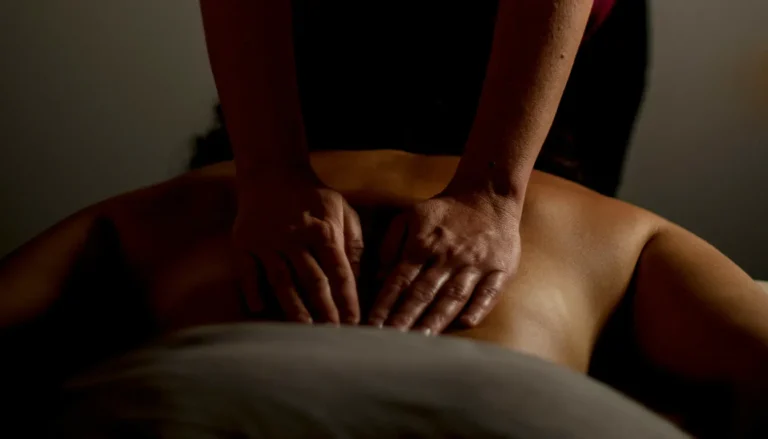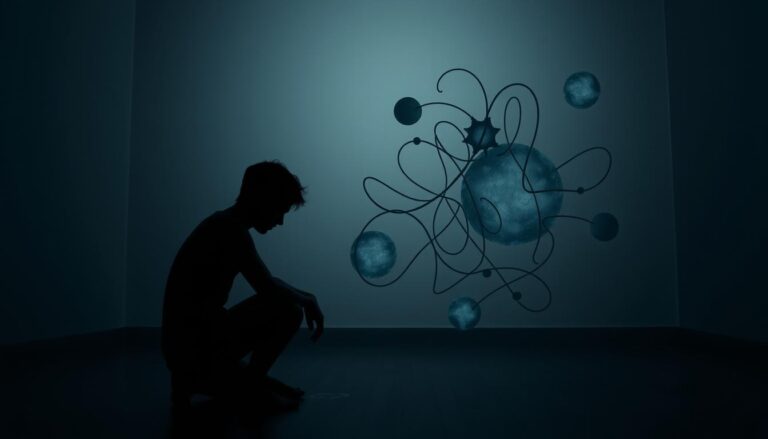Holistic therapy offers a way to look at mental health by connecting mind, body, and spirit. It believes good health comes from balancing these parts. This approach helps with issues like anxiety, depression, and stress. It also boosts emotional well-being. Practices such as mindfulness and meditation help people connect deeper with themselves. This makes managing mental health easier.
Studies say holistic therapy greatly improves mental health. For example, psychotherapy with mindfulness makes a big difference in fighting depression. Also, adding yoga to medication helps those with depression feel better1. Many people find that adding these holistic practices to their daily lives helps with stress. It can also make traditional treatments work better.
To sum up, holistic therapy offers a powerful way to improve emotional well-being. It heals by covering all aspects of human experience. For more on how holistic methods work with standard treatments, read more here.
Understanding Holistic Therapy
Holistic therapy treats the whole person, not just parts of them. It combines mental, emotional, physical, and spiritual health. This holistic therapy definition understands that everyone’s different. It looks at the root causes and symptoms of problems. The main idea is that your mind and body are connected. Good health comes from balancing every part of your life.
Definition and Core Principles
Holistic therapy uses various methods like meditation, breathwork, and yoga. These help improve your mental and emotional strength. These methods are used in many therapy settings. They help build strong emotional ties and support networks. This is vital for dealing with anxiety, stress, and depression2.
By taking part in these practices, clients learn more about themselves. This helps them make better choices for their mental health journey.
How It Differs from Traditional Therapy
Holistic therapy looks at more than just mental and emotional issues. It includes alternative practices for overall wellness. Mixing things like cognitive-behavioural therapy with yoga or acupuncture leads to deeper healing. This shows how it’s different from traditional therapy3.
It also values personal growth and community support4. It treats the many aspects of a person’s life as a whole. This approach is not about focusing on one specific problem area.
The Origins of Holistic Therapy and Its Growing Popularity
Holistic therapy combines age-old practices like Ayurveda and traditional Chinese medicine. It aims to heal the mind, body, and spirit together. Figures like Hippocrates were pioneers of this healing method. Recently, there’s been a renewed interest in healing the whole person, sparked by the history of holistic therapy and a push for more complete healthcare.
Historical Context
Recently, holistic therapy has become more common, blending into mainstream medicine, now often called integrative medicine. This change has led to more holistic therapy options for those seeking help5. Practices like yoga and meditation are now appreciated for their mental health benefits. They’re seen as helpful for issues like anxiety and stress6.
Techniques like sound baths, acupuncture, and mindfulness are gaining followers. People are noticing their benefits for emotional and mental health7.
Impact of the COVID-19 Pandemic on Therapy Preferences
The COVID-19 impact on mental health is vast. Many have turned to alternative therapies for dealing with isolation and anxiety. The shift to holistic methods reflects a response to the stress of the pandemic5. Statistics show a rise in the use of complementary or alternative medicine. This underscores the increasing acceptance of holistic treatments6.
The blend of traditional and holistic therapies is now crucial. It meets the complex emotional needs of people during these challenging times.
Holistic Therapy for Mental Health
Holistic therapy looks at the whole person—mind, body, spirit, and feelings. It deals with various mental health issues like anxiety, depression, and trauma. By focusing on the whole person, it offers a complete healing experience. Treatment centres use techniques such as art, music, and yoga therapy. These help a lot in creating positive therapeutic outcomes for people.
Benefits for Various Mental Health Issues
Holistic therapy can greatly help those dealing with anxiety, depression, and trauma. For instance, equine therapy boosts rehab success and self-worth. Art therapy lets people express themselves and heal emotionally. Techniques aim to connect mind and body, aiming for stress relief, muscle ease, and better well-being8.
This approach helps people deal with stress better, improve coping skills, and make real connections9.
Research Evidence Supporting Holistic Approaches
There’s a lot of research evidence backing holistic therapy for mental health improvement. Holistic stress management has been shown to lower anxiety and depression10. Mindfulness and energy psychology can positively impact emotional health. People often feel happier and more stable. Adding nutritional changes can also help reduce anxiety and insomnia symptoms9.
Popular Techniques in Holistic Therapy
Holistic therapy blends various techniques to improve mental and emotional wellness. It combines classic therapy with alternative treatments. This method aims to strengthen the mind-body link and tackle the core issues affecting mental health. Exploring these alternative therapies sheds light on the holistic healing journey.
Complementary Therapies Utilised
Some key techniques in holistic therapy are:
- Breathwork
- Acupuncture
- Yoga
- Meditation
- Sound baths
These practices help with managing emotions and deepen self-understanding. They encourage a hands-on approach to mental health care. This reaffirms the bond between body and mind, offering support along the way11.
Examples of Effective Holistic Practices
Notable holistic therapy practices include:
- Yoga Therapy: Aims for physical flexibility and mental and emotional peace.
- Meditation: Boosts self-awareness, helps understand thoughts and emotions, and lowers stress.
- Art and Music Therapy: Promotes creative expression in a safe setting, helping validate feelings.
Adopting these methods can greatly benefit mental health, fostering lasting positive changes and greater self-knowledge. They reduce anxiety and stress. Many find value in these techniques, encouraging self-care and active involvement in personal health1213.
Conclusion
In summary, holistic therapy is a key part of modern mental health care. It treats the whole person – their body, feelings, spirit, and social connections. This approach helps people feel better on many levels. It can reach areas that regular methods might miss, making a big difference for those dealing with mental health issues.
About 1 in 5 adults in the United States face mental health problems. This shows we need better ways to help14. Traditional therapy doesn’t work for everyone, with up to 40% of people not getting better or feeling worse. Holistic therapy uses different activities like yoga and art to help people improve their health15. It not only makes problem-solving and emotional healing better but also helps people find out more about themselves and get along better with others.
The use of holistic methods in treating mental health is set to grow. The increase in their popularity shows they could change how we deal with emotional issues. Holistic therapy is a hopeful option for those looking for complete care. It provides the care and support people need to do well in today’s busy world, by treating the entire person14.
FAQ
What is holistic therapy?
Holistic therapy looks at the person as a whole. It connects the mind, body, and spirit. The goal is to improve emotional health and achieve the best health by understanding each person’s unique stories and needs.
How does holistic therapy differ from traditional therapy?
Holistic therapy is different from traditional therapy as it includes meditation, breathwork, and yoga. It aims to make overall health better by building a strong link between the mind and body and increasing self-awareness.
Can holistic therapy help with specific mental health issues?
Yes, holistic therapy helps with issues like anxiety, depression, stress, and PTSD. It looks at cognitive and emotional sides and how these problems show in the body. This approach leads to improved results and a healthier life.
Is there research supporting the effectiveness of holistic therapy?
Definitely, research backs up that holistic methods lower anxiety and depression. Practices like deep breathing and trauma-informed yoga improve brain function and help recover from addiction.
What are some common techniques used in holistic therapy?
Techniques include yoga, meditation, sound baths, and acupuncture. These practices aim to better manage emotions and strengthen the connection between mind and body. This offers a full healing and personal growth strategy.
How does the COVID-19 pandemic impact interest in holistic therapy?
The pandemic has made people more aware of mental health, increasing the interest in holistic therapies. There’s a rising demand for treatments that cover physical, emotional, and spiritual health. It shows a move towards more integrated health approaches.
What are some examples of effective holistic practices?
Some effective practices mix physical and emotional methods. Yoga therapy, for example, helps with flexibility and brings mental peace. Art therapy allows for expressive creativity, offering a safe way to express feelings. These methods aid in emotional connection and enhance self-awareness.





